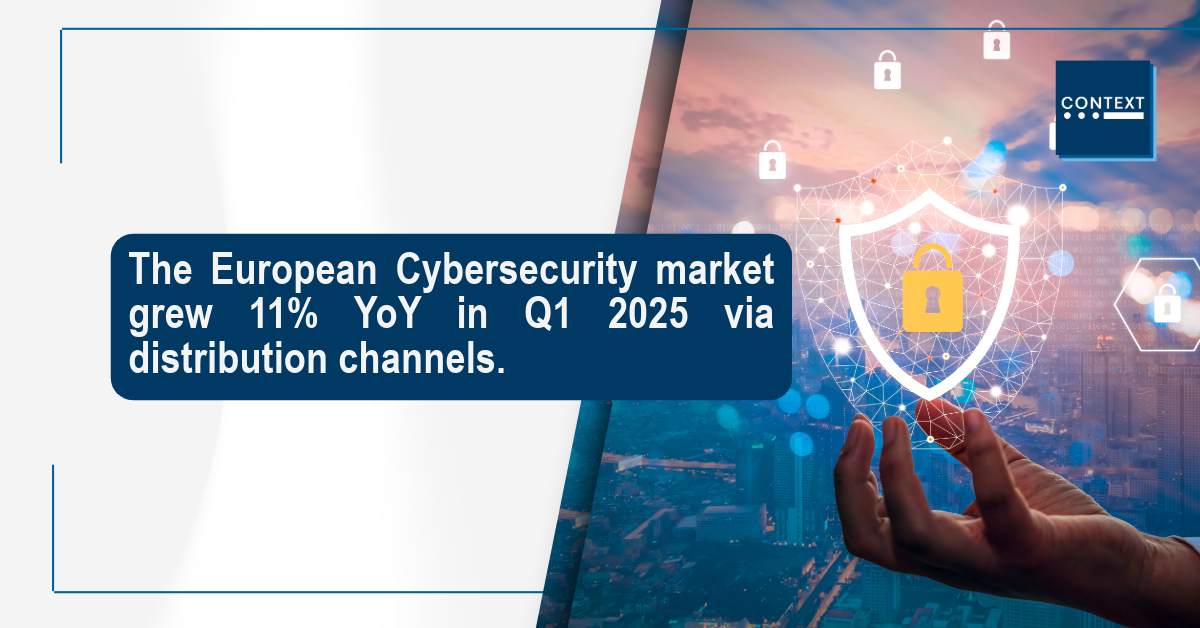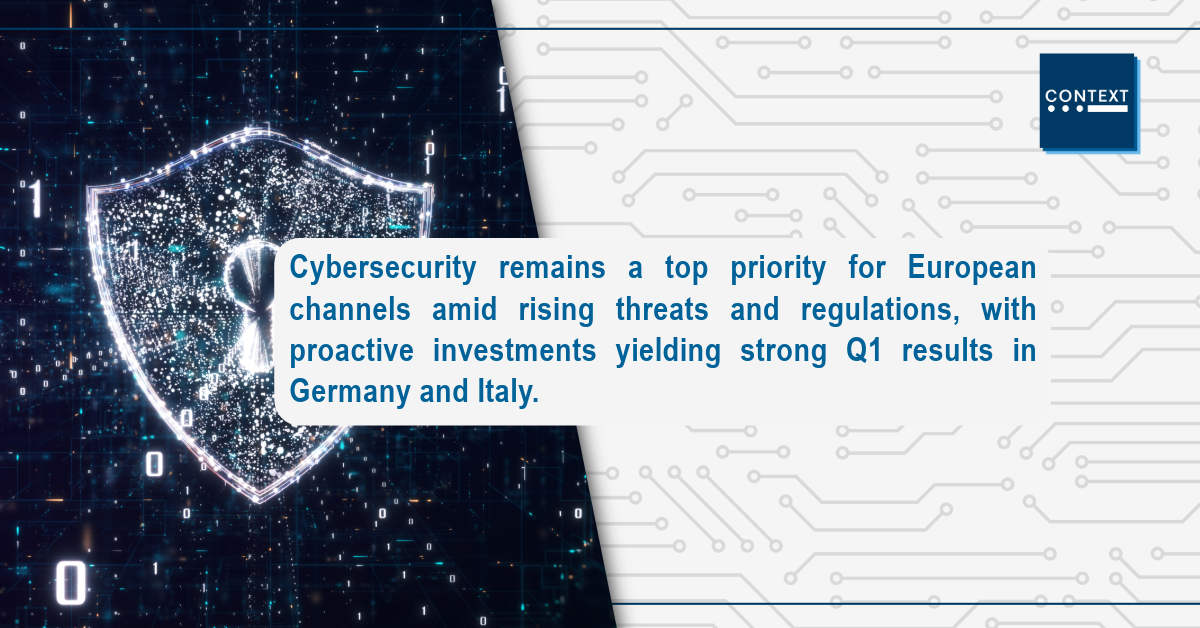The European cybersecurity market is
exhibiting substantial expansion, reporting an 11% year-on-year
increase in sales through distribution channels in the first quarter
of 2025. This follows a robust conclusion to 2024, which registered an
overall growth of 5.7%, indicating a clear upward trend.

Germany and Italy are the primary
drivers of this growth. Germany continues to be a dominant force in
the European cybersecurity market, achieving a notable 15% growth in
Q1, building upon a strong 9% growth in the preceding quarter.
Simultaneously, Italy has demonstrated a remarkable recovery.
Following a significant -23% contraction in Q4 due to localised market
factors, the nation has rebounded strongly with a 26% increase in Q1 –
one of the most pronounced recoveries observed across the region.
France also registered double-digit
growth at 12% in Q4. In contrast, the UK's cybersecurity distribution
market has experienced a deceleration in early 2025, with a 12%
year-on-year decrease. It is important to consider that this is partly
due to a more challenging year-on-year comparison for the UK market.
CONTEXT’s analysis indicates that
cybersecurity remains a key priority for European channels, driven by
both regulatory mandates and the escalating threat environment. The
trend in the first quarter clearly demonstrates that proactive
investment in security infrastructure is yielding positive results in
prominent regions such as Germany and Italy. These markets are
demonstrably increasing their focus on security infrastructure in
response to more stringent regulations and heightened awareness of
potential vulnerabilities.

Germany’s strong performance is
particularly evident within the network security sector, which
experienced a substantial 30% growth in Q1, following an 18% increase
in Q4. The nation’s rigorous implementation of GDPR and its early
adoption of the EU's NIS2 directive are significant factors in driving
investment across both the public and private sectors. Infrastructure
protection also displayed strong momentum, with a 16% increase in Q1
after a 24% rise in the previous quarter.
Conversely, endpoint protection is
exhibiting slower growth, registering a 7% decrease in Q1 and a 12%
decline in Q4. While it was anticipated that this segment would
benefit from hardware refresh cycles, the expected growth has not yet
materialised and may be further influenced by impending tariff adjustments.
These figures reflect a broader
policy evolution across Europe. While ongoing compliance
developments, such as the EU Cyber Resilience Act, are undoubtedly
shaping market dynamics, the data suggests that those countries
making early and substantial allocations to their security
infrastructure are achieving more significant progress.
In conclusion, while regulatory
frameworks establish the context, it is the tangible investment
through the channel that ultimately determines outcomes. Distributors
and vendors who strategically align with national priorities and
enterprise demands are best positioned for success within the evolving
cybersecurity landscape of 2025.
For more on these and other IT channel trends,
tune into CONTEXT’s weekly IT Industry Forum webinars.
Register here.